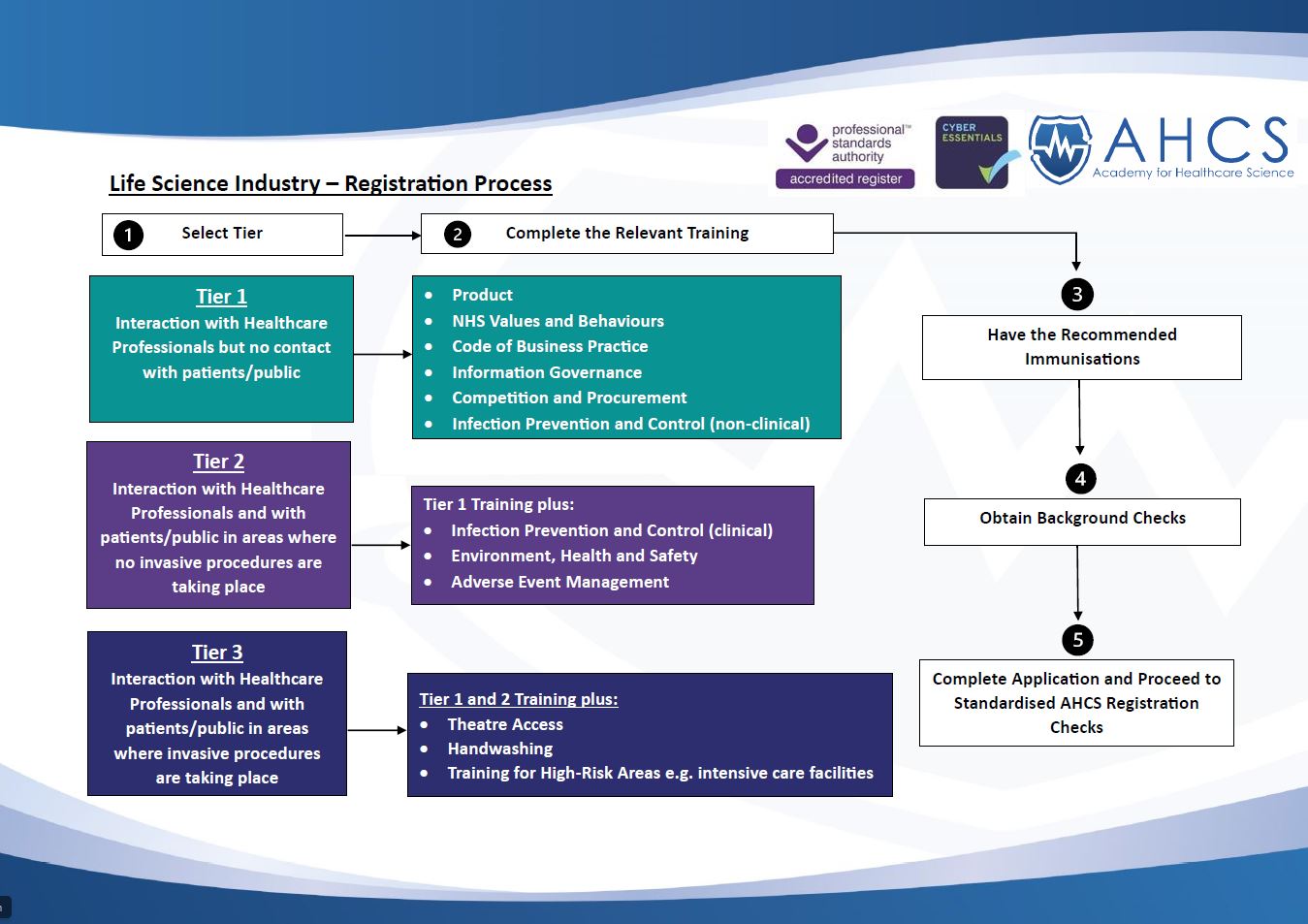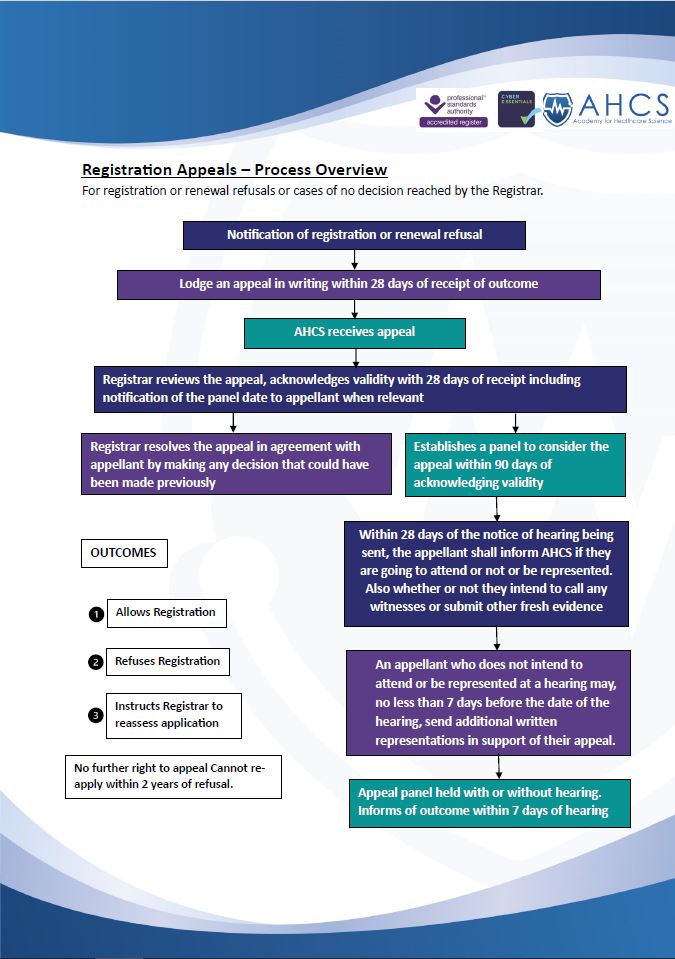The tiers are defined as follows:
Tier 1: Interaction with healthcare professionals but no contact with patients and public other than incidentally in areas open to the general public
Tier 2: Interaction with healthcare professionals and with patients and public in areas where no invasive procedures are taking place
Tier 3: Interaction with healthcare professionals and with patients and public in areas where invasive procedures are taking place
You should read the guidance documents before starting your application so you understand the process and what information you need to provide.
- Registration Rules – this sets out rules applicable to all our registers.
- How to be a good Registrant – this provides information on the registration process, details on recommended immunisations, criminal background checks and registration fees.
- Education & Training Framework Matrix – this outlines what training is required for each Tier level and maps each against the LSI Standards. It also indicates who can provide the different training elements and how training can be evidenced.
- Tiers – a summary of requirements – this explains the three levels and outlines the requirements for each tier level.
- Registration Photo Guidance – this tells you what is an acceptable format for your ID photo.
- Frequently Asked Questions (FAQs) – this may answer any questions you have.
It is important to remember:
- Registration is a way of demonstrating you have the skills, training, behaviours and competence to carry out your job. This is called being ‘fit to practise’.
- You need to demonstrate that you meet the Standards expected of Registrants.
- Registration is a way of protecting yourself, patients, healthcare staff and the general public
- Registration is not a ‘tick-box’ exercise – the Registration Rules and Standards apply to you throughout your period of registration.
- Applications are made by you, and are about you. It is not a company/employer registration.
- Giving dishonest or false information may result in you being removed from the National Register.
Information you will need to hand when making an application:
- Your training details
- Up to date immunisation information
- Details of any criminal background checks undertaken (Tiers 2 & 3 only)
- A suitable passport style photo
The Registration Process is summarised below:

What happens next
Once you have submitted your application, the administration team will check it and a non-refundable payment will be taken. If your application is incomplete or incorrect, we will contact you via email telling you what you need to do.
Successful applications
Once the checks have been made, if your application is successful, we will notify you via email on the day your registration is effective and tell you how to access the app to download your ID card.
We also publish your title, name, specialism and geographic location on the applicable part of the publicly available Accredited Register except in exceptional circumstances;
For further information on the Registration process please see The AHCS Registration Rules
Unsuccessful applications
Your application may be unsuccessful if, following assessment, we believe you do not meet our standards of proficiency or our health and character requirements. Your application can only be assessed based on the information you provide with your form.
If your application is not successful, one of our administration team will contact you via email with an explanation. You can appeal against the assessment decision within 28 days of the date on the rejection email. For an overview of the process, please see Registration Appeals process diagram below. For further information please see Registration Appeal Rules.



